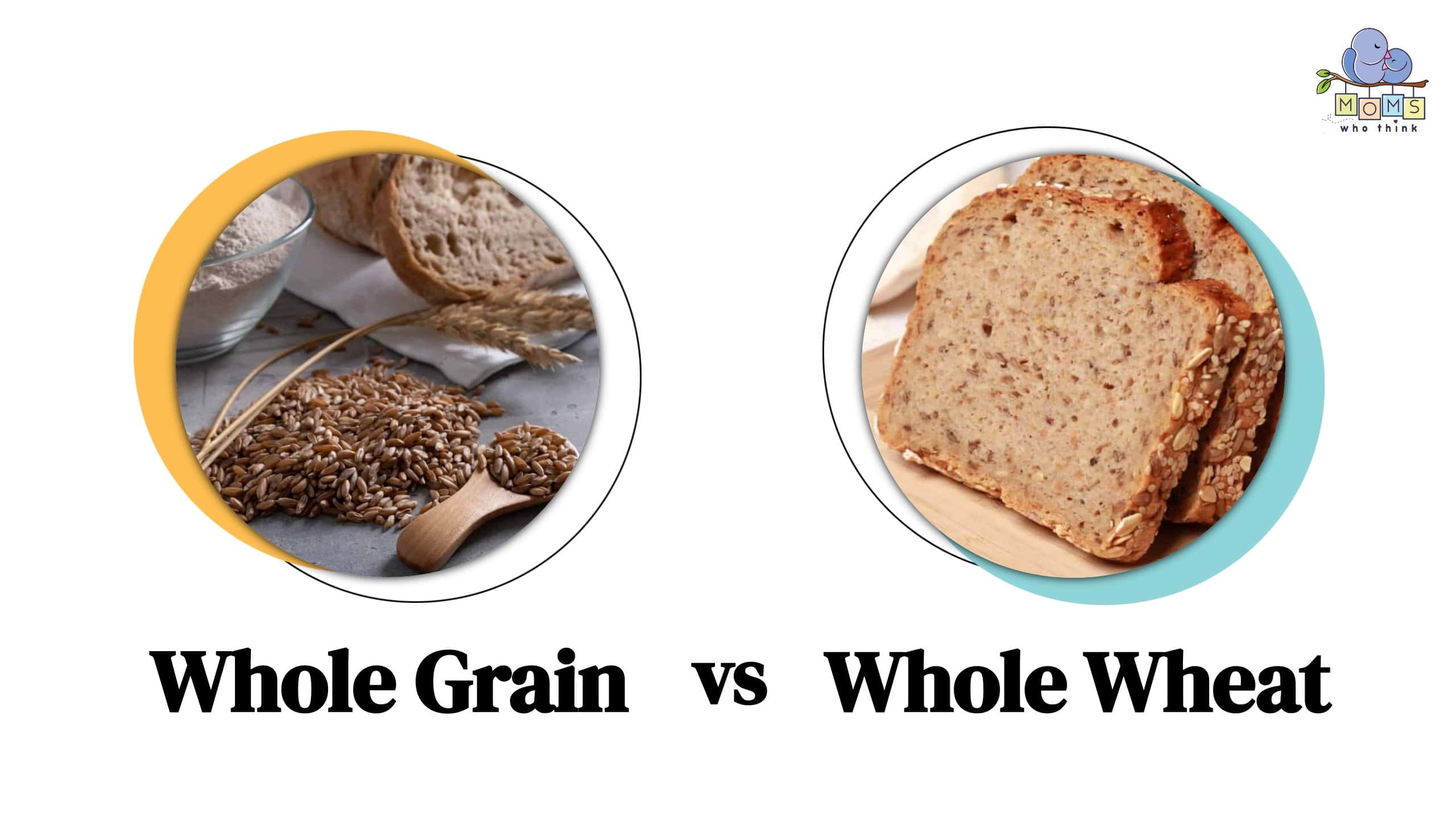While both whole grain and whole wheat are considered great options to include as part of a healthy diet, there are key differences. Whole wheat means that only the wheat grain is used and is made primarily from carbs. On the other hand, whole grain offers more nutrient-dense options to promote a healthy diet. And they come from different types of grain. This can include but is not limited to grains such as brown rice, spelt, oats, or barley. And sometimes whole grain bread is a mixture of these.
But while both whole grain and whole wheat are made from the entire kernel, there are key differences you need to know. Which option is best for you and your family? Let’s dig into whole grain vs. whole wheat to discover pertinent information that may surprise you.
Whole Grain vs. Whole Wheat: Key Differences
Texture
There are a wide variety of whole grains which means the texture and flavors vary. For instance:
Barley, rice, spelt, buckwheat, bulgur, rye, oats, farro, kamut, bran, amaranth, corn, millet, to name a few.
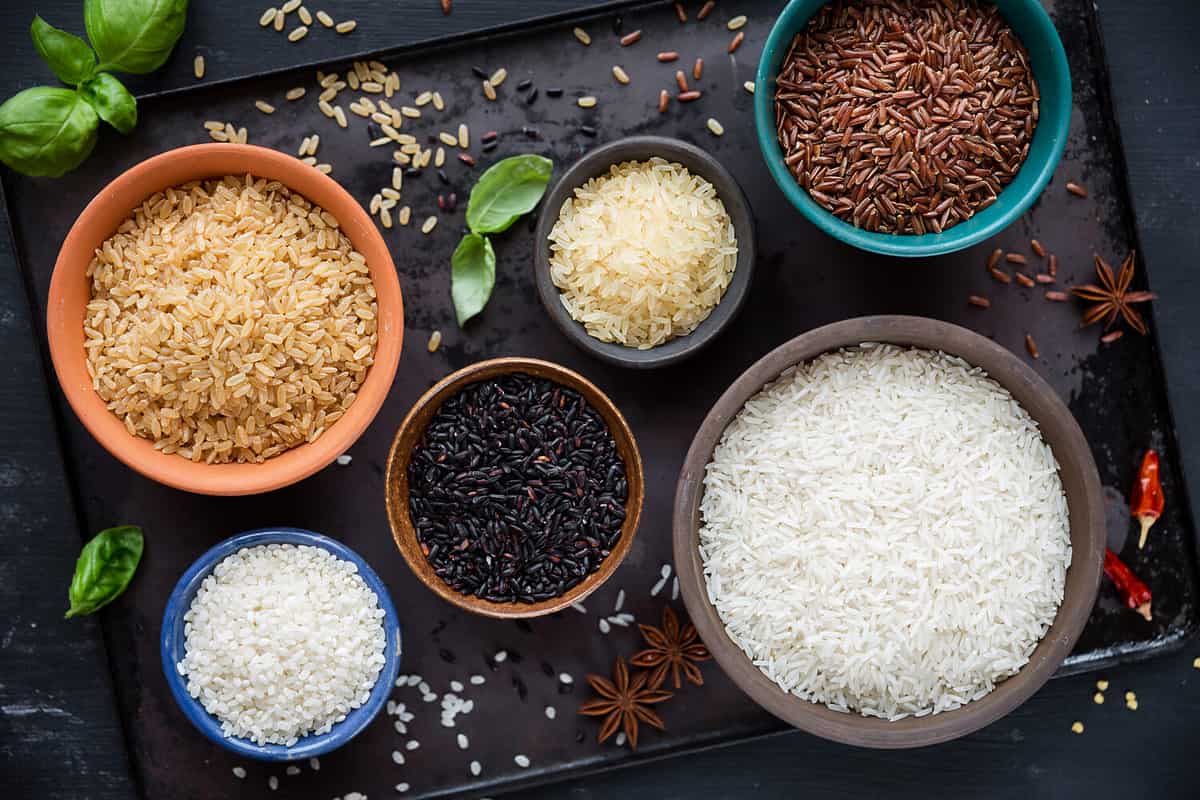
There is a wide variety of whole grains!
©kuvona/Shutterstock.com
Some whole grains have a tough outer layer known as the hull. The hull serves as a protective outer layer, but it is not edible. During grain processing, the hull is actively removed to make the grains suitable for consumption. What happens next?
Well, this removal leaves the inner, edible part of the grain. Some examples of grains with hulls are barley, brown rice, red rice, gold rice, and black or purple rice. So these whole grains have a firm and chewy texture.
Then there are whole grains without the hull such as quinoa (pronounced keen-wah), oats, and millet to name a few. That means these grains can be eaten in their entirety, with no need to remove an outer layer. And because of this, they can vary in their texture. For instance, oats have a somewhat chewy and creamy texture when cooked. And quinoa is light and delicate with a slight crunch.
On the other hand, the texture of whole wheat is lighter. Their light texture is usually in the form of a flour or different types of pasta. And it is a key ingredient in baked goods and noodles too. Examples are whole wheat flour, spelt flour, couscous, bulgur and semolina.
Overall, whole grains generally have a denser texture than whole wheat.
Flavor
In regard to the flavor of whole grains, again, it varies. For example, quinoa has a slightly nutty flavor that appeals to many people. And oats have a mild, slightly sweet and sometimes nutty flavor. And brown rice has a more robust flavor compared to white rice. So it really depends on the grains you use.
Whole wheat consists of a wide variety of food products in the form of bread, pasta, and crackers. Most have a rich, natural flavor. And some whole wheat has a slightly nutty, earthy taste.
Whole Grain vs. Whole Wheat: How to Cook it
Whole Grain Preparation
Cooking whole grains and whole wheat is pretty simple. The best way to cook grains is to experiment and find what works for you. For both whole grain and whole wheat, make sure you measure the grain and check for bugs or unwanted material.
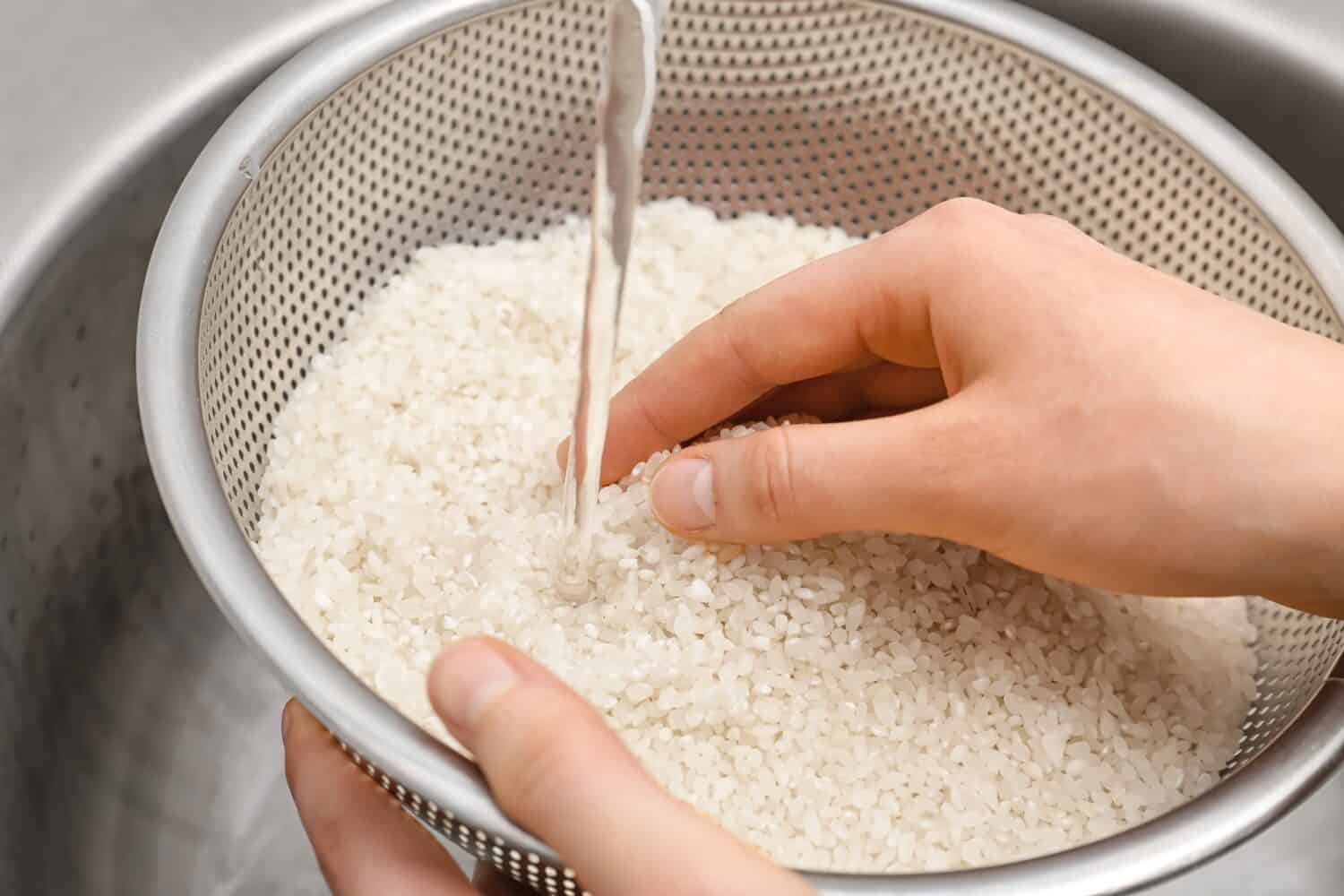
Give grains a quick rinse
©Pixel-Shot/Shutterstock.com
First, rinse the grains under cold water to clean them. Then, choose what you want to cook them in, like water or broth for extra flavor. Use about 2 cups of liquid for every cup of grains. Put the grains and liquid in a pot and add a pinch of salt if you like.* Bring everything to a boil, then lower the heat, cover the pot, and let it simmer. The cooking time depends on the grain, so check the package or look it up. When they're tender and most of the liquid is gone, your grains are ready. Let them sit for a few minutes with the lid on, then fluff them up with a fork. Try cooked whole grains as a side dish or in salads and other recipes!
Optional: Soak grains for one to eight hours to soften, increase digestibility and eliminate phytic acid. Drain grains and discard the soaking water. Now proceed with directions above.
*For with kamut, amaranth and spelt – salt interferes with their cooking time.
Whole Wheat Preparation
Cooking whole wheat is usually in the form of rice, grains or pasta and is pretty straightforward.
First, bring a pot of water to a boil; the amount of water depends on what you're cooking, so follow the instructions on the package. Optionally, you can add a pinch of salt for flavor. Next, add your whole wheat (pasta, rice, or grains) to the boiling water, stirring gently to prevent sticking. Keep the water at a rolling boil and cook according to the recommended time on the package, which can vary depending on the type of whole wheat. About a minute before the suggested cooking time is up, start testing for doneness; it should be tender but still slightly firm. Drain if needed.
You can use your whole wheat pasta, rice or grains in various dishes or with your favorite seasonings to enjoy a wholesome meal. Always consult the package for precise cooking instructions, as they may differ for different types of whole wheat.
Optional: Some whole wheat like bulgur or farro should go through a quick rinse under cold water. Then follow directions above.
Whole Grain vs. Whole Wheat: Nutritional Value
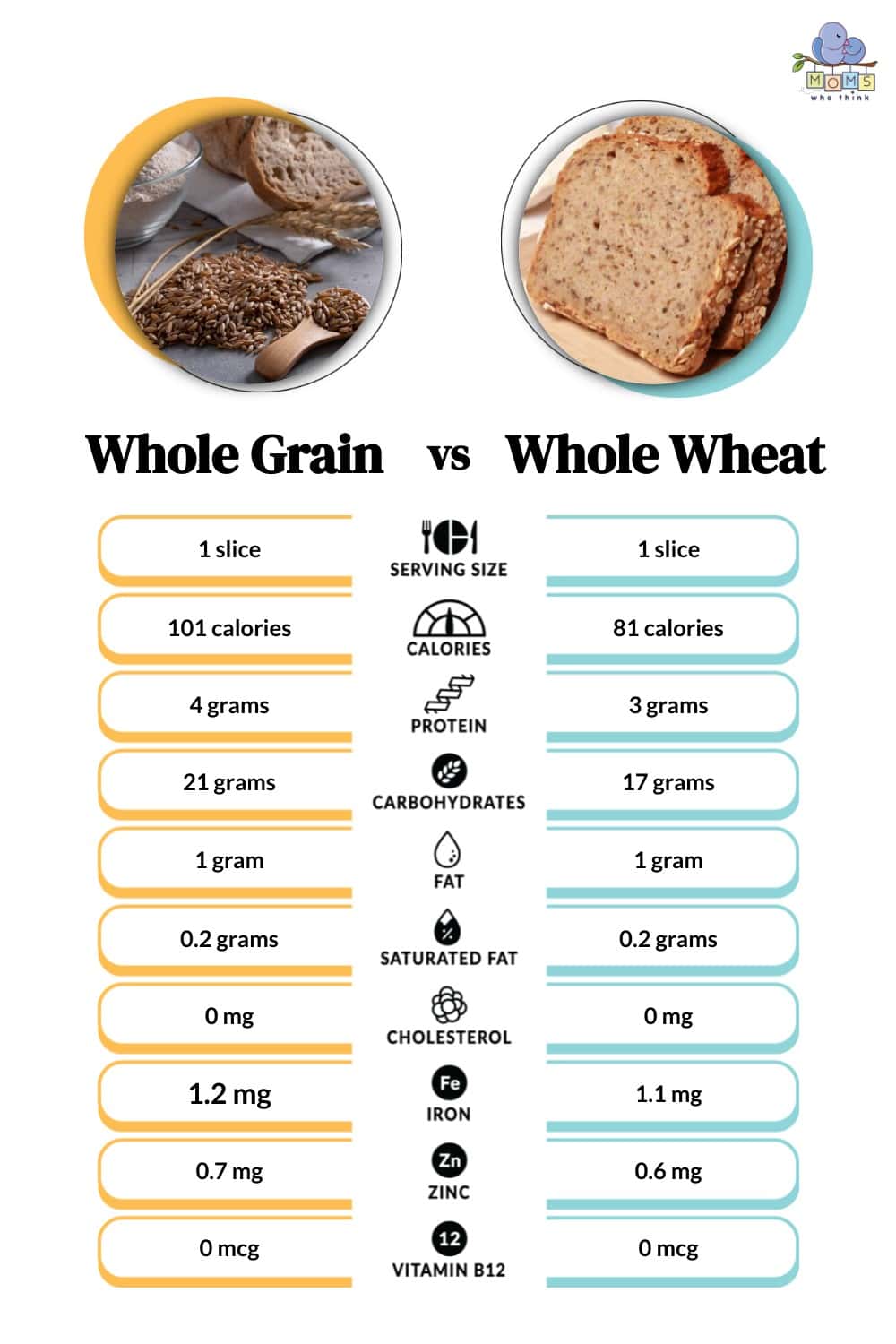
What is Whole Grain?
Made from the entire grain, whole grains include the bran, germ, and endosperm. It includes a wider variety of grains beyond just wheat. These make up the original seed and provide super important nutrients your body needs.
What is Whole Wheat?
Made from only whole wheat grains, unlike whole grain which uses the entire kernel of the grain. So for example, since whole wheat uses the grains of the wheat plant, this still includes the bran, germ, and endosperm. Like whole grains, whole wheat retains its natural nutrients and fiber. But since it is made primarily of carbs, depending on how it is processed, it can raise blood sugar levels.
Best Whole Grain Recipes
Mrs. Fields Chocolate Chip Oatmeal Cookie
Best Whole Wheat Recipes
Whole Wheat Turkey Sausage Pepper and Onion Pizza
Kids Favorite Cheeseburger Pasta
Pasta with Sausage and Cherry Tomatoes
Whole Grains vs. Whole Wheat: Health Benefits
Whole Grains
Nutrient Dense
Both whole grains and whole wheat offer a unique mix of nutrients such as vitamin B, iron, copper, zinc magnesium, antioxidants and phytochemicals. What do these nutrients do for your body?
Vitamin B helps promote healthy cell function. Iron ensures your blood carries oxygen so you feel good and your muscles work right. Copper helps keep your nerves and immune system in functioning properly. Zinc promotes healthy healing of wounds and takes care of your skin and immune system. Magnesium supports muscles, nerves, and energy production. Antioxidants protects your cells and keep you healthy. Lastly, phytochemicals, from plants, help to fight off diseases and keep your body in good shape.
Fiber Strong
Whole grains and whole wheat are generally high in dietary fiber, which is beneficial for digestion, weight management, and maintaining steady blood sugar levels.
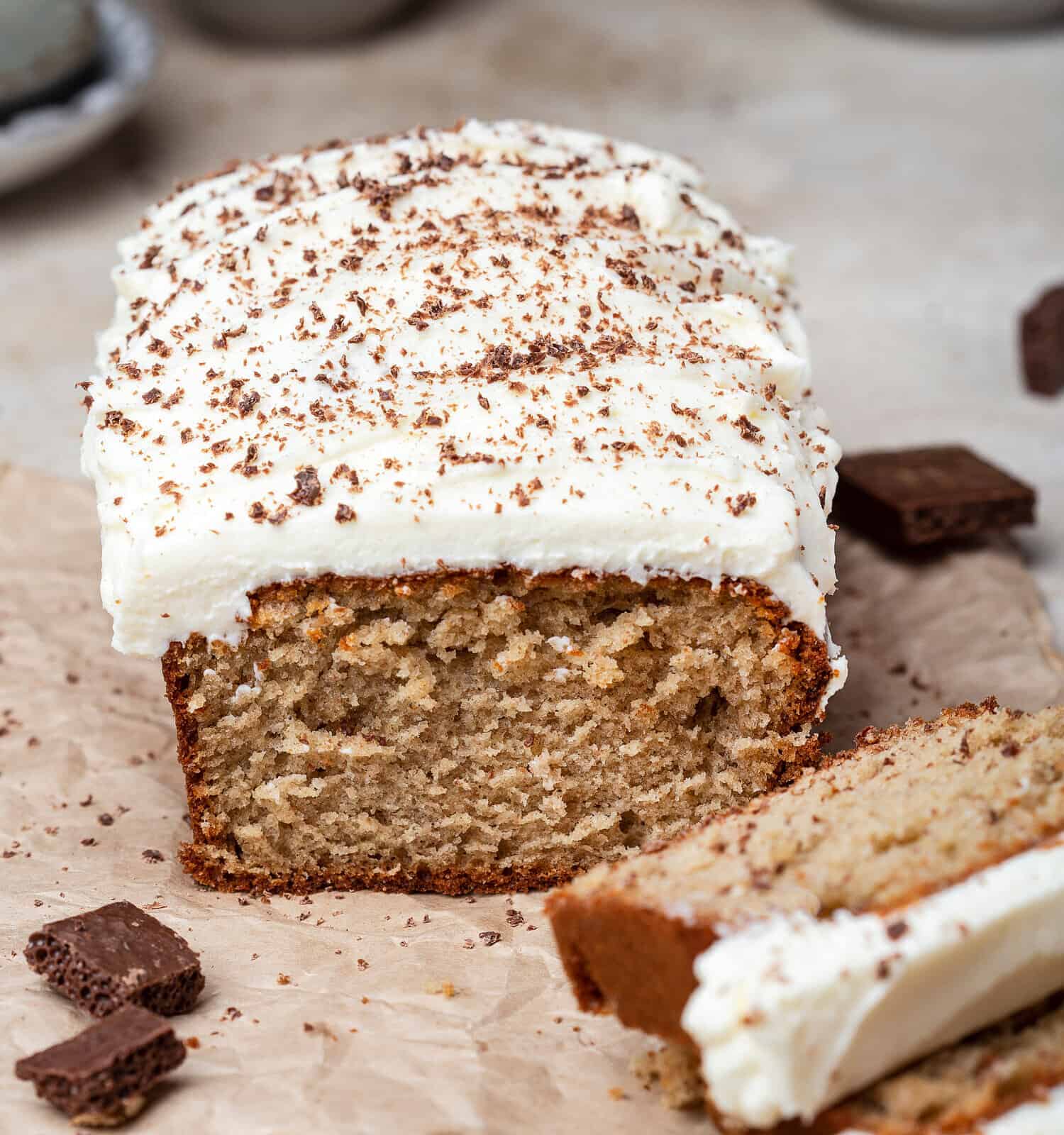
Delicious desserts can be made from whole grains!
©Pronina Marina/Shutterstock.com
Heart Health
Regular consumption of whole grains or whole wheat is associated with a reduced risk of heart disease due to their ability to lower cholesterol levels and improve overall heart health.
Weight Management
The fiber and complex carbohydrates in whole grains can help you feel fuller for longer, potentially aiding in weight management and reducing overeating.
Digestive Health
The fiber in whole grains supports healthy digestion and regular bowel movements, reducing the risk of constipation.
Feel Full Longer
When you eat whole grains, you not only feel satisfied but you also feel full for longer periods of time. This means you reduce the likelihood of eating unhealthy snacks.
Bottom line: Both whole grains and whole wheat are nutritious choices that provide numerous health benefits. They are excellent sources of nutrition, as they contain essential enzymes, iron, dietary fiber, vitamin E and B-complex vitamins. Because the body absorbs grain slowly, they provide sustained and high-quality energy. This is especially true for whole grains. It is more nutrient-dense unlike with whole wheat.
Whole Grain vs. Whole Wheat: Which Contains Gluten?
First it is important to understand what gluten is. Gluten is a naturally occurring protein that acts as a binding agent to hold food together. It has a stretchy-like quality. Think of how pizza stetches from a ball of dough. It holds together well because of the gluten protein. Without it, the pizza easily rips. Now that you understand what it is and what it does for food, some people get confused when it comes to grains and gluten.
Simply put, not all whole grains are created equal. This means while some whole grains like rye and barley contain gluten, others are completely gluten free. On the other hand, whole wheat does contain gluten. So if you are gluten-intolerant or have celiac disease, whole wheat products should not be included in your diet.
Most whole grain products are naturally gluten-free. However, it is best to check food labels before purchasing any whole grains. And even though you find in your grocery store gluten-free whole grains, some can be contaminated with gluten. Again, please read the entire food label to verify if the gluten-free grains are processed in the same facility as gluten-containing foods.
Final Thoughts
Whole grains vs. whole wheat, which will you now choose? While both share many similarities such as offering lots of nutritional value, the differences are pretty significant. This includes differences from the texture to their flavor. Whole grains offer a broader range of nutrients while whole wheat specifically focuses on the health benefits of wheat. If you have a gluten sensitivity or celiac, please make sure you read all labels to look out for cross-contamination. All in all, the choice between whole grains vs. whole wheat depends on your dietary preferences and nutritional goals.
